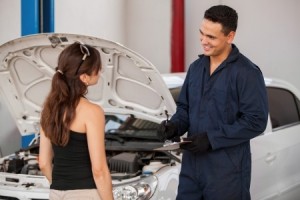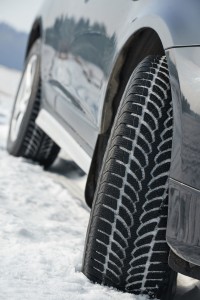Minnesota Among Cheapest States For Car Repairs
 A review of national automotive data revealed that Minnesotans paid less than the average consumer to have work done on their car in 2011.
A review of national automotive data revealed that Minnesotans paid less than the average consumer to have work done on their car in 2011.
According to the data, Minnesotans paid an average of $323.51 for “check engine” related repairs, $10 less than the national average of $333.93. As you can see by the lists below, the most costly states for car repair are out west, while the cheapest states are located in the northeast and Midwest.
Five Most Expensive States For Car Repair
- Wyoming ($389.18)
- Utah ($378.54)
- California ($367.86)
- Montana ($364.29)
- Arizona ($362.65)
Five Least Expensive States For Car Repair
- Indiana ($283.95)
- Maine ($289.56)
- Wisconsin ($289.90)
- Iowa ($289.91)
- New Hampshire ($292.91)
The data breaks down the two main components of auto repair – Parts and Labor- to get a grand total. The average American spent $215.32 on parts and $118.61 on labor for check engine related repairs in 2011. Minnesota came in south of both of those numbers, as the average cost for parts was $211.68, and the average cost of labor was $111.63.
The most common repair associated with a check engine light was for an oxygen sensor replacement. While some people suggest drivers ignore oxygen sensor issues because vehicle performance will feel the same, oxygen sensor problems can reduce fuel economy by up to 40 percent. At that rate, a driver will quickly shell out more money with increased pit stops for gas than if they would have had the problem fixed when the check engine light first lit up.
Mechanics also noted that ignoring your oxygen sensor can lead to failure of the vehicle’s catalytic converter, which can cost hundreds or even thousands of dollars to fix.
Simply put, if your check engine light comes on, don’t make it worse by ignoring the issue. It can cost you a lot more money down the road.
Related source: CarMD.com
-
Self-Driving Car Sales To Balloon Over Next 20 Years
 Jan 8, 2014
Jan 8, 2014Sales of self-driving cars are expected to grow from 230,000 in 2025 to nearly 12 million by 2035, a new study suggests. Self-driving cars are currently few and far between, but researchers believe sales will exponentially increase as technology continues to improve. By 2035, researchers believe the cumulative sales of self-driving cars will top 54 […]
-
What is Hydrophobic Glass?
 Jul 15, 2015
Jul 15, 2015Hydrophobic glass, as the name implies for anyone versed in word origins, means that the glass is treated in such a way that it repels water. We’ve installed hydrophobic glass before, and although it’s more expensive than normal windshield glass, some drivers prefer the tempered glass. Below, we explain a little more about hydrophobic glass and […]
-
The Benefits and Drawbacks of Snow Tires
 Dec 23, 2014
Dec 23, 2014As winter weather continues to set in, drivers have a big decision to make. Should they equip their car with snow tires? Snow tires, as the name implies, are designed to provide you with a better driving experience in wintery conditions. That said, there are some drawbacks to equipping your car with snow tires. Below, […]




